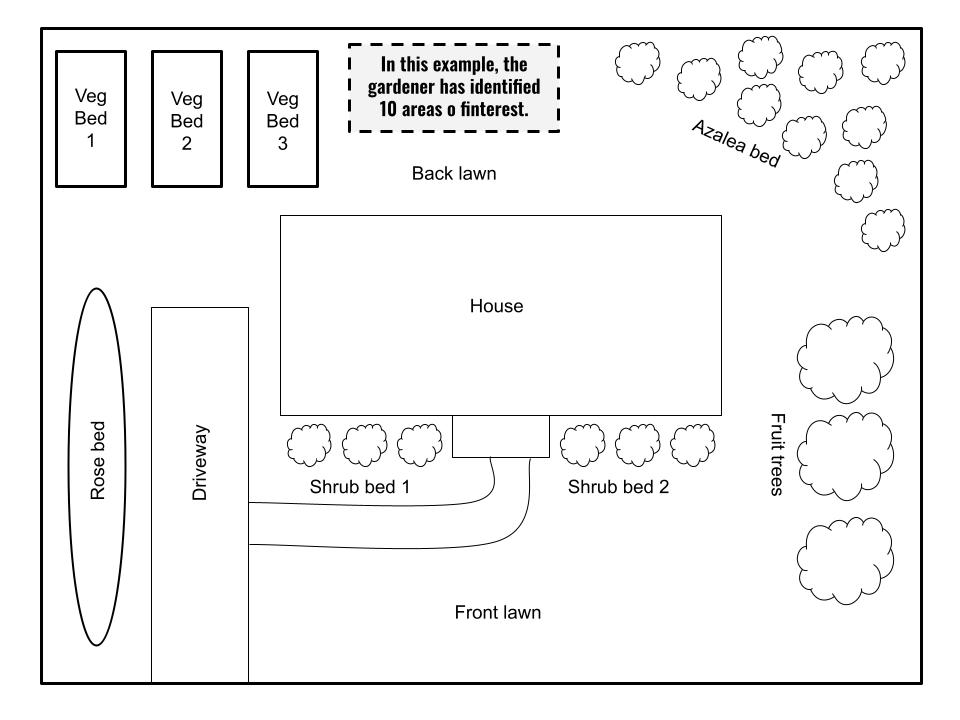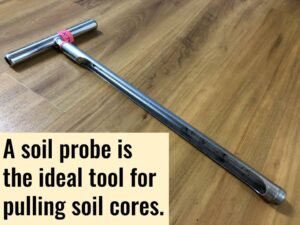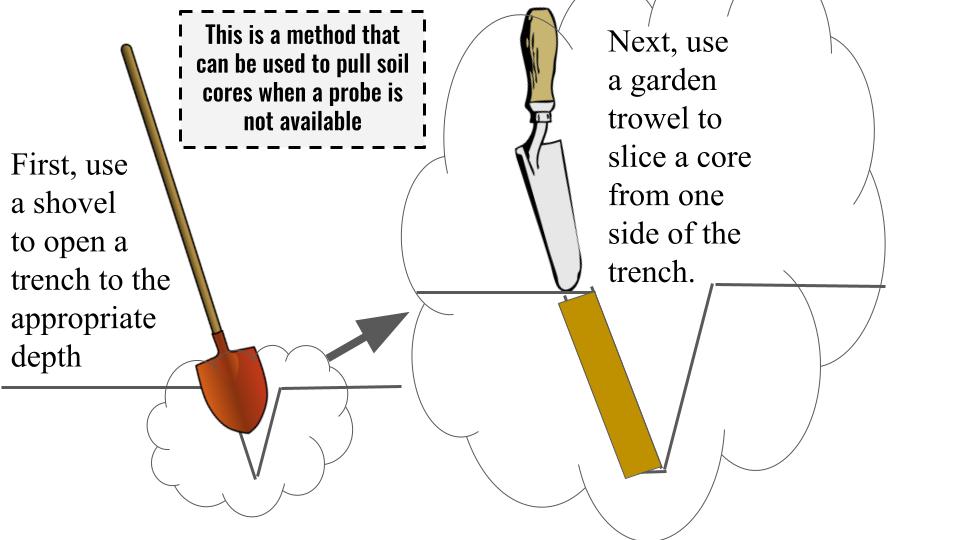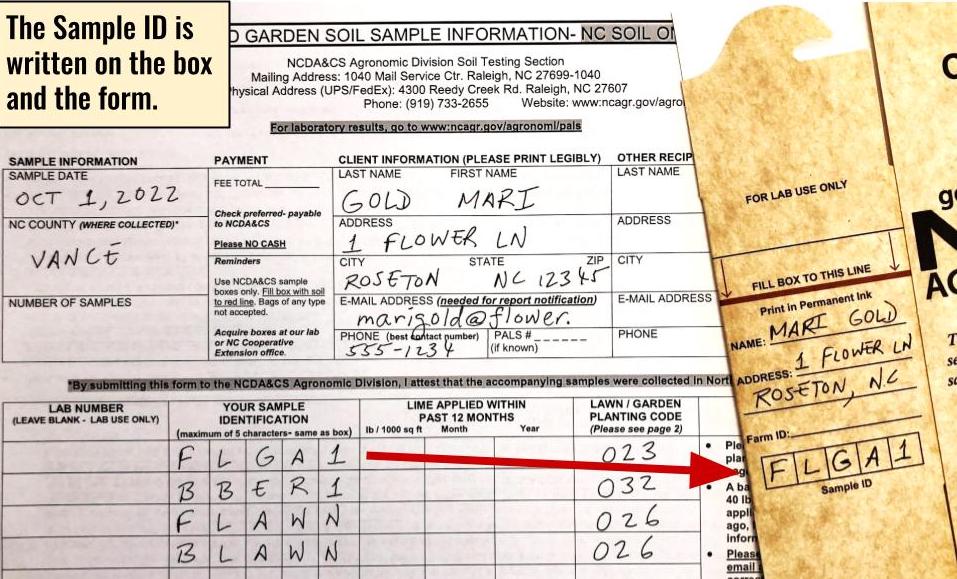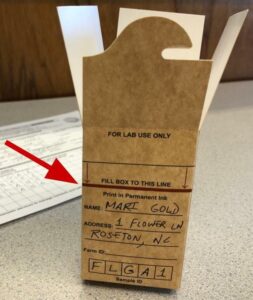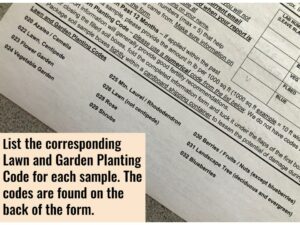The Ultimate Guide to Soil Sampling Lawns, Gardens & Landscapes
go.ncsu.edu/readext?929954
en Español / em Português
El inglés es el idioma de control de esta página. En la medida en que haya algún conflicto entre la traducción al inglés y la traducción, el inglés prevalece.
Al hacer clic en el enlace de traducción se activa un servicio de traducción gratuito para convertir la página al español. Al igual que con cualquier traducción por Internet, la conversión no es sensible al contexto y puede que no traduzca el texto en su significado original. NC State Extension no garantiza la exactitud del texto traducido. Por favor, tenga en cuenta que algunas aplicaciones y/o servicios pueden no funcionar como se espera cuando se traducen.
Português
Inglês é o idioma de controle desta página. Na medida que haja algum conflito entre o texto original em Inglês e a tradução, o Inglês prevalece.
Ao clicar no link de tradução, um serviço gratuito de tradução será ativado para converter a página para o Português. Como em qualquer tradução pela internet, a conversão não é sensivel ao contexto e pode não ocorrer a tradução para o significado orginal. O serviço de Extensão da Carolina do Norte (NC State Extension) não garante a exatidão do texto traduzido. Por favor, observe que algumas funções ou serviços podem não funcionar como esperado após a tradução.
English
English is the controlling language of this page. To the extent there is any conflict between the English text and the translation, English controls.
Clicking on the translation link activates a free translation service to convert the page to Spanish. As with any Internet translation, the conversion is not context-sensitive and may not translate the text to its original meaning. NC State Extension does not guarantee the accuracy of the translated text. Please note that some applications and/or services may not function as expected when translated.
Collapse ▲The only way to accurately determine how much lime and fertilizer are needed in the different areas of your lawn, garden and/or landscape is to collect soil samples and have them analyzed/tested. In North Carolina, there is no better option for soil analysis than the service provided by the of the NC Department of Agriculture & Consumer Services (NCDACS) Agronomic Division.
TAKING A GOOD SAMPLE
A soil sample consists of about one pint of soil that accurately represents an area of interest (e.g. a lawn, flower bed, vegetable garden, etc.). The sample must be collected properly or the resulting report and recommendations will be meaningless. There are no shortcuts, but essentially it boils down to this: pull 10 to 12 soil cores from an area of interest, mix them thoroughly in a plastic bucket, then place about a pint of the mixed soil into a soil sample box to send to the lab. Again, there are no shortcuts and heeding all of the information that follows is crucial to ensuring that sample collection is not a waste of time.
DECIDING WHEN TO SAMPLE
Samples may be collected and submitted any time of year. However, sampling would be strongly beneficial in the following scenarios.
- Before planting – Whenever a new planting is contemplated (e.g. a new lawn, garden bed, shrub bed, etc.), pulling a sample from the area well in advance has significant benefits. Ideally, the sample should be collected and sent to the lab several months prior to installation.
- Where plants are performing poorly – Soil analysis can be a useful tool for diagnosing plant problems. The symptoms of low pH and nutrient deficiencies can in some cases resemble insect and disease problems.
- As a routine check on soil fertility – In intensively managed areas such as vegetable gardens, lawns, fruit plantings and annual color beds, sampling every three or four years is advisable.
Other factors to consider with respect to timing are:
- Soil moisture levels – The ideal sampling conditions are when the soil is moist, not fully saturated, and not bone dry. If the soil is too wet, it will be difficult to mix the cores. If the soil is too dry, pulling the cores may be challenging.
- Areas recently limed or fertilized – Delay sampling at least six to eight weeks.
- Avoiding sample fees – Samples submitted April through November are analyzed at no charge, whereas there is a fee of $4 per sample if submitted in December through March.
DEFINING THE AREA OF INTEREST
The starting point of sample collection is defining the area of interest. This will be an area in a yard or garden with uniform soil that is planted (or will be planted) with same or similar plants (e.g. vegetables, shrubs, or flowers). The area of interest could be as small as a raised bed, or as large as an acre lawn. Regardless of the size of the area, the sampling procedure is the same.
In a typical landscape, a comprehensive sampling plan might involve pulling samples from several different areas. In example below, there are ten areas of interest that might be sampled, as follows:
- Vegetable bed 1
- Vegetable bed 2
- Vegetable bed 3
- Back lawn
- Azalea bed
- Fruit tree area
- Front Lawn
- Shrub bed 1
- Shrub bed 2
- Rose bed
GATHERING TOOLS AND SUPPLIES
The following items will be needed:
- Soil probe – This is a stainless steel tube about one inch in diameter with a T-handle on top. Gardeners who plan to do routine sampling may want to purchase one. Pulling 10 to 12 cores per sample is much easier with this tool. It may be possible to borrow one from the local N.C. Cooperative Extension Center. Otherwise, a shovel and trowel may be used as shown below.
- Plastic bucket – The cores should be combined into a plastic bucket for mixing.
- Sample box & form – Pickup at the local N.C. Cooperative Extension Center.
COLLECTING THE SAMPLE
The first step is to collect the cores (again, 10 to 12) from the area of interest and mix them thoroughly. A core is a slice of soil from the surface to the desired depth. Within the area of interest, the cores should be pulled from random locations. A good strategy is to zig zag across the area, stopping every few feet to pull a core and drop it in the bucket. Sampling depth depends on the plants growing (or to be grown) in the area of interest based primarily on the rooting depth. Here are some general guidelines for sampling depth:
- Turf – 4 inches
- Vegetable gardens – 6 to 8 inches
- Tree/shrub planting areas – 6 to 10 inches
- Fruit planting areas – 6 to 10 inches
- Flower beds – 6 to 8 inches
MIXING THE CORES
The cores should be well pulverized (using a gloved hand is sufficient) and mixed thoroughly. Remove roots, rocks, vegetation and any other non-soil debris. The sample (about 1 pint) is then pulled from the mixed soil.
ASSIGNING A UNIQUE IDENTIFIER TO EACH SAMPLE
Give each sample a Sample Identification of up to five letters and/or numbers. Choose an identifier that will help you remember the area represented by the sample, such as FLGA1 (flower garden number 1) or BBER1 (blueberry row number 1). This Sample Identification will be recorded on the sample box as well as the information form. If multiple samples are submitted, it may be helpful to keep a record of which Sample ID corresponds to each sample area.
PREPARING AND FILLING THE BOX
While the box is flat, fill in the name, address and sample ID in the spaces provided. Then connect the flaps/tabs on the bottom of the box and fill it to the red line with the corresponding soil. Before closing the box tap it on a hard surface to get the soil to settle, then check to see if additional soil is needed. Do not put soil in a plastic bag. Do not use tape to seal a sample box.
FILLING OUT THE FORM
List up to six samples on the sample form. For each sample, list the Sample ID that was written on the box. Also enter a Lawn/Garden Planting Code (found on the back of the form). Be sure to include full contact information, including email address.
SENDING SAMPLES TO THE LAB
Samples can be mailed, shipped or delivered in person to the lab in Raleigh. In many counties, the sample can be dropped off at the N.C. Cooperative Extension County Center. If you send samples through the mail, pack them carefully in a sturdy container that will protect the boxes. Do not use manila envelopes.
RECEIVING AND UNDERSTANDING THE LAB REPORT
It can take anywhere from a few days to several weeks to receive the report, depending on delivery schedule (if dropped off at the Cooperative Extension office), time of year and workload at the lab. There are a couple of ways to receive the report. An email notification will be sent if a valid email was provided on the Sample Information Form. Reports can also be found at the website for the soil analysis lab. Additionally, many N.C. Cooperative Extension County Centers can provide a printed copy of the report upon request.
The most important information on the report is the lime and fertilizer recommendation. Assistance with interpreting the information can be obtained by contacting the local Agricultural Extension Agent or the NC Department of Agriculture & Consumer Services Regional Agronomist.
This document was created by Paul McKenzie, Horticulture Extension Agent with N.C. Cooperative Extension. Some information was adapted from Agronomic Sampling Folder No. 1, April 2014 revision, published by the NC Department of Agriculture & Consumer Services, Agronomic Division.
Created April 2023




